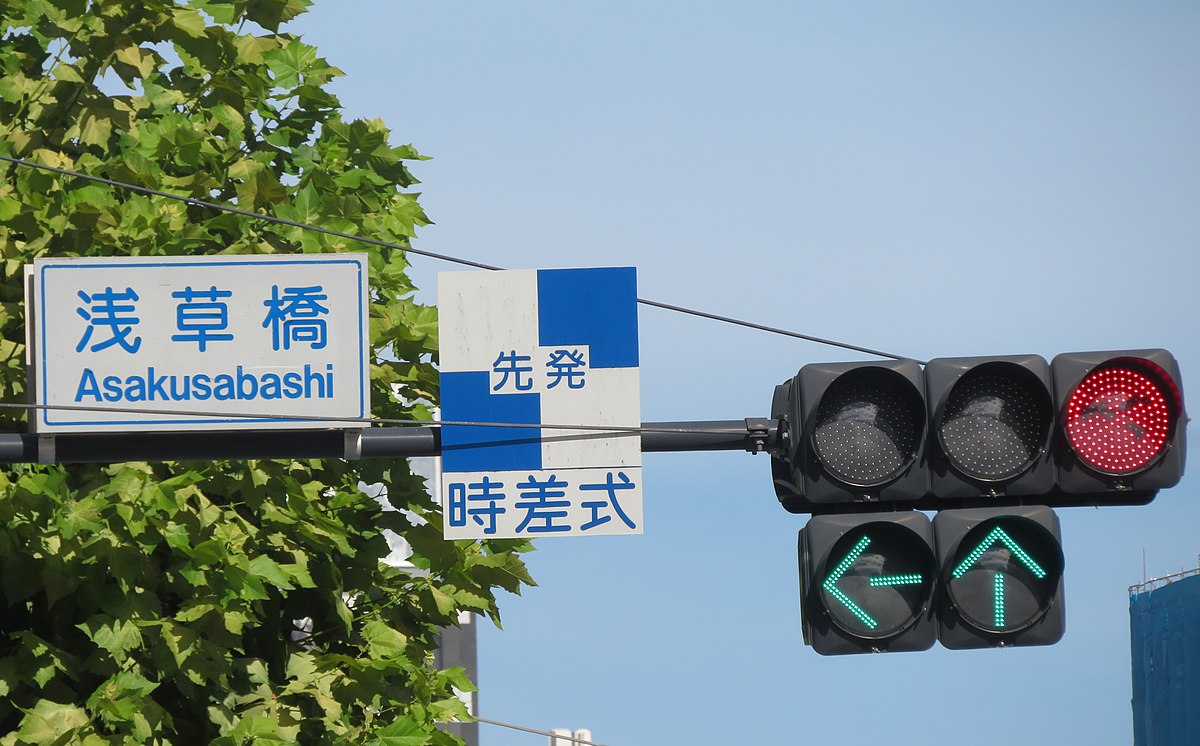The project being implement by DULT has already missed several deadlines. It has now floated a short-term tender for providing power connections.

Japanese adaptive traffic signaling system. (Wikimedia Commons)
A decade after a proposal was made to introduce adaptive traffic signals using modern Japanese technology in Bengaluru, the project is yet to be implemented, though its work commenced in July 2021.
The MODERATO (Management of Origin-Destination Related Adaptation for Traffic Optimization) technology-enabled traffic signaling system could usher in a major change on Bengaluru roads, ensuring smoother vehicular traffic flow, increased fuel efficiency, lesser waiting time at signals, and more safety for pedestrians and motorists.
The system was installed at various junctions in the Central Business District (CBD) and other prominent junctions in the city a few months ago. However, the implementation of the project missed several deadlines due to various technical reasons, Bengaluru traffic police sources told South First.
Incidentally, when the work of the project commenced in July 2021, the deadline was October 2022. Sources said that the major challenge was in connecting the signaling system with the power grid.
The Directorate of Urban Land Transport (DULT) has floated a short-term tender for providing electric connections to these adaptive signaling systems. DULT convened two meetings with key stakeholders in July and October last, to meet the latest December 2023 deadline — which was also missed.
Traffic police sources said the project would be in operation by March 2024.
According to the DULT officials, the new signals being implemented as part of the Bengaluru Advance Traffic Information and Management System (ATIMS) project with funds from the Japan International Cooperation Agency (JICA) use MODERATO technology for optimizing signal timings to minimize overall delays for a group of signals in an area.
These signals utilise traffic and queue length data from road sensors to optimise the signal timings based on real-time road traffic conditions.
The existing traffic signals are operated on fixed-timing mode or on actuated mode where signal timings are modified based only on limited local sensing (detection of a vehicle approaching a signal), but without considering the traffic situation at nearby junctions.
Since such an overall traffic situation in an area cannot be optimally controlled in real-time with the existing signal technologies, the new adaptive traffic signaling technology, employed in Japan, is being replicated in Bengaluru, DULT officials told South First.
MODERATO-based technology brings in capabilities to adapt signal plans in real-time by considering several data points (traffic density, queue length) obtained from sensors to reduce traffic congestion in an entire area by coordinating with signals in the neighbouring areas.
The optimiser technology and sensing capabilities for assessing on-ground conditions in real-time are some of the unique features of the new signal system, officials said.
The new signals are being implemented at 28 junctions in the central parts of Bengaluru, mostly on MG Road, Old Madras Road, Hosur Road, etc.
The total cost of the project is 1,192 million Japanese Yen (approximately ₹70 crore). “The contract was signed on 30 June 2021, and the project is in the advanced stage of completion,” a DULT official told South First.
The planned system provides an exclusive signal phase for pedestrians to cross junctions. Pedestrian phases are indicated with separate exclusive signals.
Though the technology being implemented covers only 28 junctions, other signal technologies (AI-based or others) implemented beyond these junctions could work independently. If necessary, signal plans of multiple systems (technologies) could also be coordinated by designing suitable signal plans, DULT officials explained.
Joint Commissioner of Police (Traffic) MN Anucheth told South First that the Bengaluru traffic police are excited about the new adaptive traffic signals being implemented in the city.
“If the technology can do so much — reading traffic density and queue lengths at a particular stretch and can communicate the data and coordinate with nearby signal junctions — there would be seamless movement of traffic and the waiting time at signals will be drastically reduced,” Deputy Commissioner of Police (East) Traffic Kuldeep Kumar Jain told South First.

May 14, 2024

May 14, 2024

May 14, 2024

May 13, 2024

May 13, 2024

May 13, 2024